|
|
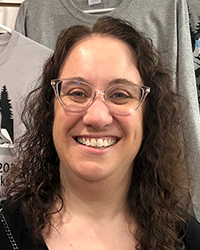 Jen Jen
|
|
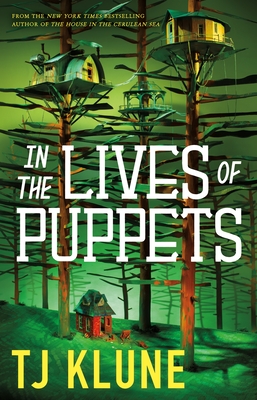
|
|
In the Lives of Puppets
TJ Klune
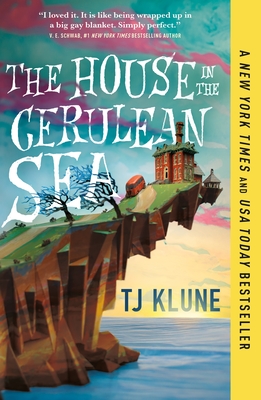 TJ Klune, the author of The House in the Cerulean Sea (among many others!), has crafted a new gem, and I’ve fallen head over heels for the characters. The story opens with an android, Giovanni, in the woods making a home for himself. Living alone, he becomes lonely. As fate would have it, he is blessed with the appearance of a human infant, Victor. Like Giovanni, Victor grows to love building, tinkering, salvaging, and inventing. His favorite place to visit is the nearby Scrap Yards, which is Giovanni's least favorite place for Victor to visit, which probably only adds to the appeal of it. Victor brings home two discarded robots. With his skills and determination, he restores them: Nurse Registered Automaton to Care, Heal, Educate, and Drill (Nurse Ratched, for short) and Rambo, a vacuum robot. Nurse Ratched is a whip-smart sociopath and Rambo is needy, love and attention starved. Giovanni's family has now swelled to four. The publisher tells us this book is "Inspired by The Adventures of Pinocchio, In the Lives of Puppets is part Swiss Family Robinson, part WALL-E, and all heart." I agree with this and would add, there is also an element of The Wizard of Oz to it. This book includes a journey, mysteries, and it's just a great story. I highly recommend it! TJ Klune, the author of The House in the Cerulean Sea (among many others!), has crafted a new gem, and I’ve fallen head over heels for the characters. The story opens with an android, Giovanni, in the woods making a home for himself. Living alone, he becomes lonely. As fate would have it, he is blessed with the appearance of a human infant, Victor. Like Giovanni, Victor grows to love building, tinkering, salvaging, and inventing. His favorite place to visit is the nearby Scrap Yards, which is Giovanni's least favorite place for Victor to visit, which probably only adds to the appeal of it. Victor brings home two discarded robots. With his skills and determination, he restores them: Nurse Registered Automaton to Care, Heal, Educate, and Drill (Nurse Ratched, for short) and Rambo, a vacuum robot. Nurse Ratched is a whip-smart sociopath and Rambo is needy, love and attention starved. Giovanni's family has now swelled to four. The publisher tells us this book is "Inspired by The Adventures of Pinocchio, In the Lives of Puppets is part Swiss Family Robinson, part WALL-E, and all heart." I agree with this and would add, there is also an element of The Wizard of Oz to it. This book includes a journey, mysteries, and it's just a great story. I highly recommend it!
|
|
|
| |
|
|
|
|
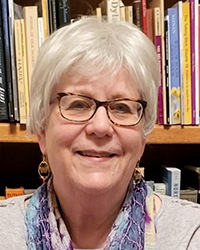 Sally Sally |
 |
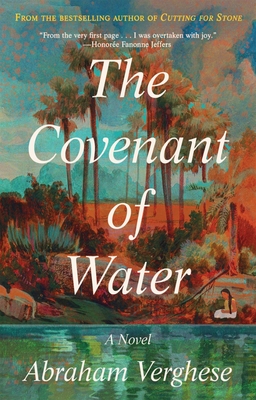
|
 |
The Covenant of Water
Abraham Verghese
Don’t let the length of this book—736 pages—deter you from reading it. The writing is beautiful and the story compelling. You’ll find yourself immersed in it and will reenter your own life a little dazed by what you’ve experienced.
In 1900, a young girl in Kerala, on India’s Malabor Coast, is sent by boat to her wedding to a much older man. Gradually, she learns that her husband’s family suffers from something she calls the Condition. In each generation, someone dies by drowning. The girl becomes known as Big Ammachi (Mother) and the book traces the lives of three generations of her family. Her faith and the love she has for those who are dear to her carry her through a lifetime of new beginnings. The hardships and mysteries which were part of Big Ammachi’s early life are lessened as the years pass. Developments in medicine and changes in her community are just some of the phenomena she experiences. And it’s all connected by water in a covenant which shares the message that all is one.
Verghese is a gifted storyteller, and you won’t want to miss this masterpiece.
Note: this book will be released May 2.
|
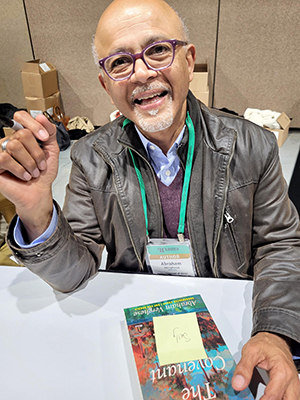
Sally met Abraham Verghese at a recent bookseller’s conference. |
| |
|

|
|
Thirst for Salt
Madelaine Lucas
Thirst for Salt, a debut novel by an Australian writer, is a quiet coming of age story. The unnamed narrator discovers a picture online of a former lover with his young daughter. Memories take her back to when she was 24, just out of college, and vacationing with her mother at Sailors Beach, a seaside area. For the moment she was drifting, with no firm plans for her future. While swimming she met Jude, a man 20 years older than she. Their attraction was strong and mutual, and they began an affair which lasted several months. The rhythm and metaphors of the book are drawn from the sea, and the pacing of the story as well. The book explores the nature of love as well as its erosion; the relationships of mothers with their grown children; and making sense of one’s life in looking back at it. It’s a lovely book and a satisfying read.
|
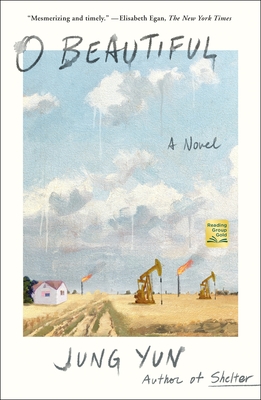 |
|
O Beautiful
Jung Yun
O Beautiful is a complex novel set in North Dakota during the recent oil boom. Elinor Hanson, a former model and aspiring journalist, was sent to North Dakota by a prestigious magazine to write a story about the boom and its effects. Elinor happened to be from North Dakota. As the child of a Korean immigrant and a white father in the United States military, she never felt accepted in her home state. Upon her return, she was amazed by the changes resulting from the oil boom. Her original assignment was to write about fracking and shifting power dynamics. However, the story which interested her was the ways in which race, gender, and class were intertwined with the conflicting interests of oil companies, local residents, and the many people who flooded the area, looking for work. There are also story lines from Elinor’s growing up years, and a relationship with a professor which resulted in her getting the writing assignment.
The book is thought-provoking. There are no easy answers for Elinor or for the reader, but plenty to ponder. |
| |
|

|
|
Bomb Shelter
Mary Laura Philpott
I listened to Bomb Shelter, a book of linked essays, on Libro.fm. It’s read by the author, who is appealing and self-deprecating. One morning she was awakened by strange noises, which were caused by her teen-age son having a seizure. She relates this terrifying experience and moves on to other incidents, most related to her longing to keep everyone she loves safe through the challenges of life. While I was drawn to the writer, her essays seemed scattered to me—until I read one about meditation. Anyone who has a meditation practice knows that your mind tends to wander while meditating, and you constantly and patiently disengage from random thoughts. Philpott is no exception, and I realized that the book is like trying to meditate and bouncing from thought to thought. And somehow, it all works in a quirky sort of way. Each essay is briefand can be read in a short period of time. It’s a book for anyone who longs to keep their loved ones secure, no matter how impossible that is.
|
|
|
| |
|
|
|
|

Ann |
|
Ann’s reviews this month
may be found in Youth Yak.
| |
|
|
| |
|
| |

Brita
|
|

|
| The Butcher’s Blessing
Ruth Gilligan
It seems that once one opens the cover on Irish literature, whether fiction, biography, ancient or modern history, one must prepare to be consumed. The Butcher’s Blessing, by Ruth Gilligan, is no exception. This compelling story of modern members of an ancient brotherhood of ritual cattle butchers, their families, and countrymen is filled with love, anguish, and deep mysteries of identity and unbreakable bonds. It is a rather dark read, but memorable and worth the time. |
|
|
| |
 |
 |
 |
|
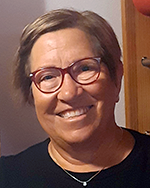
Doni
|
|
 |
|
In the Lives of Puppets
TJ Klune
Victor Lawson lives in the forest, in a hidden Swiss Family Robinson-like compound. He lives with his father Gio, a creator robot, Nurse Ratched, a medical robot with a sadistic streak, and Rambo, a chatty little vacuum that rounds out their family. Vic himself is human.
In one of Vic’s forays into the Scrap Yards, he discovers an android that he brings home and reanimates. Hap, the new addition, has lost his memory, but his presence in the family leads to events that change the way they live and feel forever. Dark secrets are revealed, and Vic is called on to consider the past deeds of the robots he loves.
When Gio is decommissioned and taken to the City of Electric Dreams, our motley little crew sets out to rescue him and restore his memory. Putting his family back together is harder than Vic could ever have imagined.
For a book that was mostly characterized by robots, this book showed the humanity of vulnerability and love. It is a stand-alone fantasy by the author of The House in the Cerulean Sea.
|
|
| |
|
|
|
|
|

Hannah
|
|
 |
|
Harlem Shuffle
Colson Whitehead
The setting of this novel is very different from Whitehead’s The Underground Railroad. Harlem Shuffle opens to Ray Carney, a furniture store owner in 1959 New York. He’s a family man, mostly on the up-and-up, but he doesn’t look too closely at where some of the pieces people bring him come from. And then his cousin Freddie pulls him into a more dangerous and clearly illegal venture. This book is chock full of history: the streets and personalities of Harlem are palpable. You find yourself rooting for Carney even when he is less than honorable, you are so much in his brain. Things change so much and so little over the five years covered. And so much and so little has changed today. |
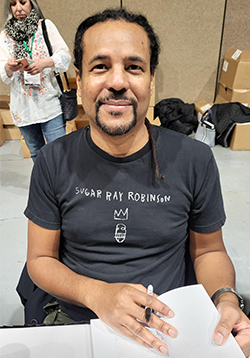
Sally met Whitehead at a bookseller’s conference in Seattle. He was sitting next to Abraham Verghese! |
| |
|
 |
|
Endpapers
Jennifer Savran Kelly
A young bookbinder in 2003 Manhattan is in search of their (their? I trip over using this plural pronoun when talking about one person!) artistic and gender identity. I was so confused in the first chapters of this novel I found it heavy going, but once I settled into reading about a person struggling to understand and accept such fundamental things, I was fascinated and entertained and felt better equipped to recognize and empathize with gender non-conforming people. And it’s a page-turner. I ended up throwing aside my housekeeping plans in order to finish the book last night, and I then returned to the first chapters. They made perfect sense when read from the perspective I gained by the end of the book. |
| |
|

|
|
The Survivalists
Kashana Cauley
No, this isn’t a heavy novel about an Idaho militia. Althea is a driven associate attorney at a large corporate firm in Manhattan. She is trying one last computer-match date: he turns out to be a supremely mellow man with a coffee business, and they click. After a few dates he takes her to meet his roommates/business partners in the three-story house they own, a fixer-upper where they live and work. The coffee is amazing, but one roommate is extremely hostile and the other is almost mute. And seems drunk. And could that be a bunker under the Astroturf patch in the back yard?
Cauley’s background ranges from having been an anti-trust lawyer in New York to having written for Trevor Noah. In her acknowledgements she recognizes “the gun and food stockpilers of my youth.” This is a quirky, comic book. The dramatic tension comes from the question of whether Althea will be seduced by the survivalist mentality. But in the end the real issue is what, at heart, it means to put survival before everything else. |
| |
|
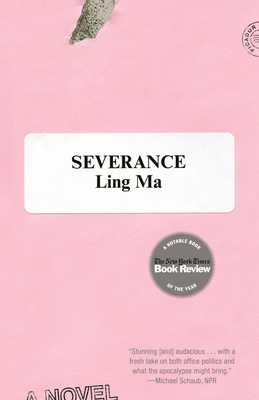
|
|
Severance
Ling Ma
This is a heavy-duty novel. It’s about a world epidemic that starts in China: but it was written in 2018! N95 masks, governmental denial, and other predictions Ma makes are downright spooky.
The protagonist, Constance, was born in China but raised in the United States, as was Ling Ma. Constance works in an office in Times Square, managing the production of Bibles. She frequently travels to China, staying in five-star hotels while trying to avoid knowing about the exploitation of the workers her firm is responsible for. That’s just a taste of the complexity of the book’s several themes: consumerism, the immigrant experience, mother-daughter relationships, and more.
When the novel opens Constance has fled New York. She was one of the last people to do so. She’s with a group of people that have somehow escaped catching Shen Fever. They’re traveling to a Facility near Chicago, being led there by an authoritarian young man. Maybe it was a mistake to leave New York, untenable as it has become… |
|
| |
|
 |
|
|
|

Lee |
 |
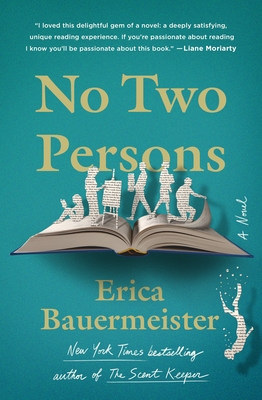
|
 |
No Two Persons
Erica Bauermeister
The epigraph for this book is:
No two persons read the same book, or saw the same picture.
The Writings of Madame Swetchine, 1860
This is a novel in stories, each focused on an individual who is tied in some way to others in the novel. And the individuals are bound together by having read (or written) the novel Theo. (And, no, Theo does not really exist. Well, except inside No Two Persons.)
Theo is the debut novel by a young author, and we gradually learn the basics of its plot as the characters read the book. But we understand the epigraph more fully as various characters, who are usually broken in some way, pick up the book.
If this seems confusing, it is not. Each story is wonderfully and individually crafted and reveals a part of the whole. (I might have wished that I had jotted down the names of characters as they appeared, so I would more quickly realize, “Oh! That’s the sister of...” or “Oh! That’s the daughter of... .” but maybe the delayed recognition was part of the experience.)
Note: this book will be published May 2
|
| |
|
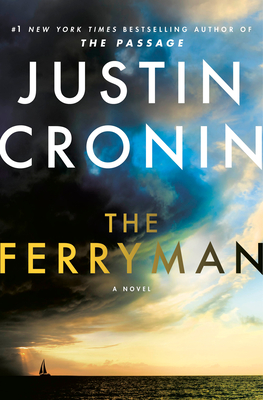 |
|
The Ferryman
Justin Cronin
The islands of Prospera are invisible to the rest of the world, which is falling apart due to environmental disasters and war. The residents of Prospera itself are virtually immortal. They live long and healthy lives, but eventually their bodies simply wear out and they “retire.” They are taken to the island known as the Nursery, where their minds are wiped of memories, and they are given revitalized bodies. Then, in the bodies of 16-year-olds, they become wards to a Prosperan couple wishing to have a child/ward.
There is also a second group of people who live on another island known as the Annex. They are the support staff who do the tasks that keep the citizens of Prospera from having to labor at anything they wish to avoid. (And, yes, there are difficulties in trying to maintain goodwill with this kind of social order.)
Proctor Bennet is a Prosperan who is a Ferryman ... He takes the people who are retiring to the ferry which transports them to the Nursery. Proctor is having problems. He is having dreams, which is not supposed to happen. He also must retire his father, and it does not go well at all. And then his implanted monitor shows that he himself is dying.
Suddenly, everything that seemed to be real is thrown into turmoil, and this becomes the heart of this novel.
Is it good? Absolutely, as long as you are a reader willing to accept the fact that not every story is neatly linear but rather “all creation [is] boxes within boxes within boxes, each the dream of a different god.”
Note: this book will be published May 2.
|
| |
|
 |
|
Cousins Aurora Venturini and
The Birthday Party by Laurent Mauvignier
It is amazing that Cousins, the winner of Página/12’s New Novel Award in 2007 has not previously been translated to English. It is wonderful. (I suspect that there will be some who give it just one star or even do not finish it, but I found it quite amazing.)
Yuna, the narrator, is part of a poor family that, in addition to poverty, suffers from a variety of genetic and mental disorders. She herself has a handicap, but she also has not insignificant skills as a painter. As she matures, she does what she can to aid and protect her severely disabled sister Betina and her cousins Carina and Petra.
Perhaps a typical sentence can tell you much:
"I realize that I’m learning to criticize with scorn (idem) and will try to correct that tendency because it makes your soul ugly and gives you wrinkles on your forehead and I don’t want to have wrinkles on my Modigliano model’s face which I know is pretty from the compliments people say in the street which didn’t permeate before but now do and I should clarify that I should have put idem after permeate because as you know I get the difficult terms from the dictionary and until I am able to use them with absolute fidelity I won’t feel that they’re fully my property and forgive me if I’m boring you with all these explanations but I was born like this and I want to earn what I have honestly and not steal from anyone."
Note: this book will be published May 16
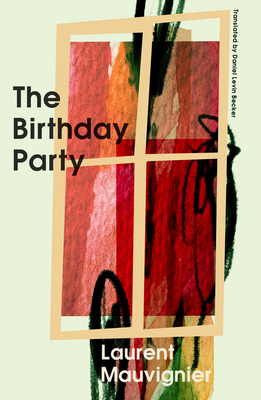 The stream-of-consciousness style of Cousins is also seen in The Birthday Party. Beyond that, there are few similarities. The Birthday Party is a mystery-thriller with multiple characters providing the narration. The focus, though, is on Marion, who seems to have a life story that is more complex than is known to the other characters. The stream-of-consciousness style of Cousins is also seen in The Birthday Party. Beyond that, there are few similarities. The Birthday Party is a mystery-thriller with multiple characters providing the narration. The focus, though, is on Marion, who seems to have a life story that is more complex than is known to the other characters.
I would highly recommend both of these novels, though both are adult-only fare and not for anyone who is put off by stream-of-consciousness narration.
Note: Cousins will be published May 16
|
| |
|
 |
|
The Postcard
Anne Berest (Tina Kover, Translator)
This novel was first published in France in 2021, winning several awards. While fiction, It seems to be a memoir or autobiography. It is clearly based on facts and research, but there are gaps in the details that Berest needed to fill in because so many of the individuals who would have known the specific details died in the Holocaust.
The theme of this novel can be found in a quote from an interview with Berest: “Why did my family not leave? Will I, who come from a family that failed to get out of harm’s way, be able to?” (Jewish Telegraphic Agency, 2022)
A postcard with four names on it arrives at the home of Berest’s mother, Lélia Picabia, in 2003. The postcard has four names printed on it ... the mother’s grandparents and Lélia’s mother’s two siblings. All died in the Holocaust.
After many years, the author feels that she must learn the origin of the postcard. Who sent it? Why did they send it? Was it a memorial? Was it a threat? The author has significant research skills, as does the mother ... who also has a huge “archive” of material. Together, though sometimes with reluctance, they peel back the layers of history.
This is a fascinating read. And the quote above may well be relevant today for many people. Are we entering an era when the political atmosphere may cause people to ask, “Why did my family not leave?”
Note: this book will be released in the United States on May 16
|
|
| |
|
| |
|
|
|
|

Tim
|
|
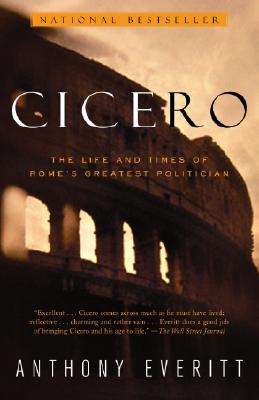
|
|
Cicero: The Life and Times of Rome's Greatest Politician
Anthony Everitt
"History admits no counterfactuals, no might have beens.”
Rational, undogmatic, tolerant, law-abiding and urbane is how Anthony Everitt sums up the life and personality of Marcus Tullius Cicero (109–43 BC), arguably one of his era’s most influential statesman, lawyer, rhetorician, and self-made man. Not born to wealth and power, he made his way in life through skill and principled action, in a world not well known for either. Roman society was very different from our own, and Everitt's gift, as a biographer is to comfortably place us in the stream of events and alongside personalities that with time have grown (or perhaps shriveled) into static inhuman monuments. Everitt makes them come alive and even makes them speak. |
| |
|
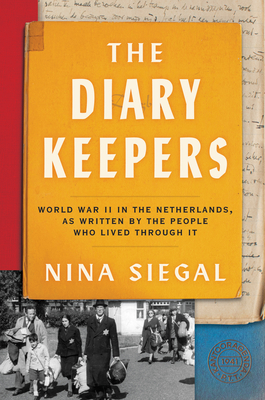
|
|
The Diary Keepers
Nina Siegal
I saw the title of this book and thought, "Great, here's a book that will give me examples of different styles and methods of keeping a diary.” What I didn't plan on was being taken unexpectedly to the Netherlands as it entered World War II. You see, the book is about the collection of diaries that the government of the Netherlands, amassed at the conclusion of the war. They thought that it was important these varied documents be saved, in an effort to preserve a direct window into the lives of their writers. What a great idea! Even better, they decided to collect material from as many people as possible, from every aspect and viewpoint. This includes the people who actively resisted the German occupation, those who supported it, Jews who were in hiding, and even Jews who were being transported to the death camps. Pretty sobering stuff! We've all heard of Anne Frank's diary. I had no idea that there were hundreds of similar documents, of different styles, perspectives, and sadly fates.
|
|
|
Would you like to be a guest reviewer?
Email Sally at sally@beagleandwolf.com |
| |
|
|
|
|
|
— page top —
|
|




 Sally
Sally













 TJ Klune, the author of The House in the Cerulean Sea (among many others!), has crafted a new gem, and I’ve fallen head over heels for the characters. The story opens with an android, Giovanni, in the woods making a home for himself. Living alone, he becomes lonely. As fate would have it, he is blessed with the appearance of a human infant, Victor. Like Giovanni, Victor grows to love building, tinkering, salvaging, and inventing. His favorite place to visit is the nearby Scrap Yards, which is Giovanni's least favorite place for Victor to visit, which probably only adds to the appeal of it. Victor brings home two discarded robots. With his skills and determination, he restores them: Nurse Registered Automaton to Care, Heal, Educate, and Drill (Nurse Ratched, for short) and Rambo, a vacuum robot. Nurse Ratched is a whip-smart sociopath and Rambo is needy, love and attention starved. Giovanni's family has now swelled to four. The publisher tells us this book is "Inspired by The Adventures of Pinocchio, In the Lives of Puppets is part Swiss Family Robinson, part WALL-E, and all heart." I agree with this and would add, there is also an element of The Wizard of Oz to it. This book includes a journey, mysteries, and it's just a great story. I highly recommend it!
TJ Klune, the author of The House in the Cerulean Sea (among many others!), has crafted a new gem, and I’ve fallen head over heels for the characters. The story opens with an android, Giovanni, in the woods making a home for himself. Living alone, he becomes lonely. As fate would have it, he is blessed with the appearance of a human infant, Victor. Like Giovanni, Victor grows to love building, tinkering, salvaging, and inventing. His favorite place to visit is the nearby Scrap Yards, which is Giovanni's least favorite place for Victor to visit, which probably only adds to the appeal of it. Victor brings home two discarded robots. With his skills and determination, he restores them: Nurse Registered Automaton to Care, Heal, Educate, and Drill (Nurse Ratched, for short) and Rambo, a vacuum robot. Nurse Ratched is a whip-smart sociopath and Rambo is needy, love and attention starved. Giovanni's family has now swelled to four. The publisher tells us this book is "Inspired by The Adventures of Pinocchio, In the Lives of Puppets is part Swiss Family Robinson, part WALL-E, and all heart." I agree with this and would add, there is also an element of The Wizard of Oz to it. This book includes a journey, mysteries, and it's just a great story. I highly recommend it!










 The stream-of-consciousness style of Cousins is also seen in The Birthday Party. Beyond that, there are few similarities. The Birthday Party is a mystery-thriller with multiple characters providing the narration. The focus, though, is on Marion, who seems to have a life story that is more complex than is known to the other characters.
The stream-of-consciousness style of Cousins is also seen in The Birthday Party. Beyond that, there are few similarities. The Birthday Party is a mystery-thriller with multiple characters providing the narration. The focus, though, is on Marion, who seems to have a life story that is more complex than is known to the other characters.
